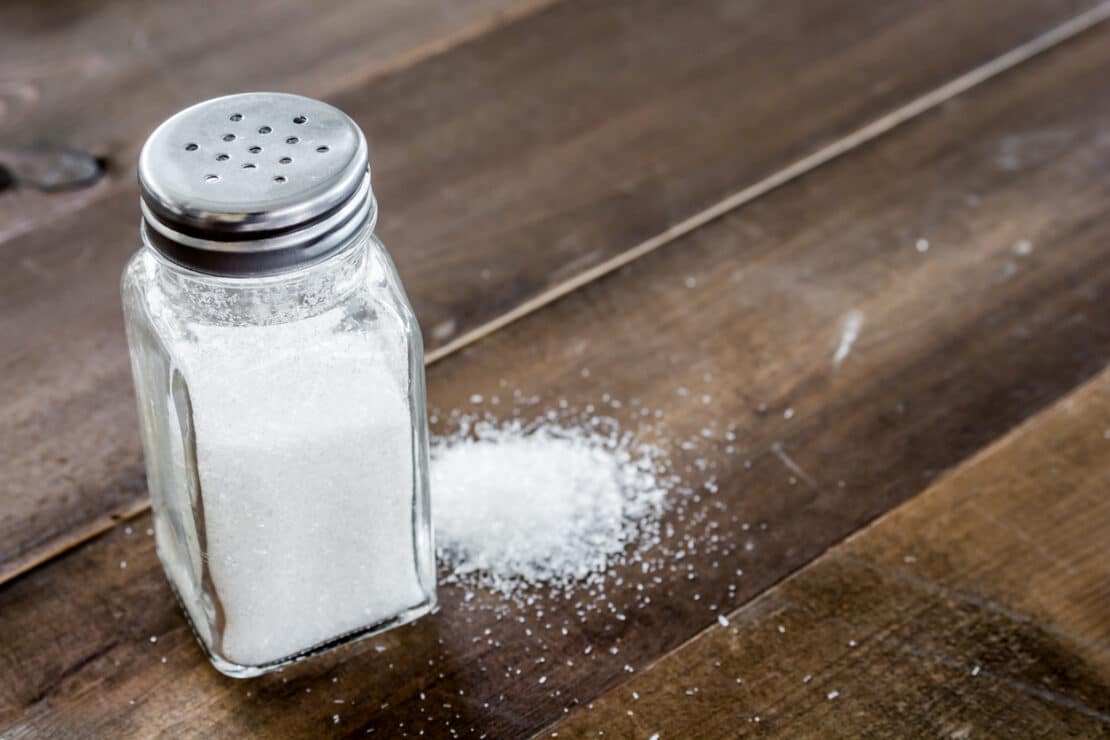For years, mainstream doctors have been telling us we need to cut down on salt. They say it’s bad for your heart because it raises your blood pressure.
The average American gets about 3.4 grams of salt a day. But the World Health Organization says we should get no more than 2 grams The American Heart Association limit is even lower at 1.5 grams.
But a major international study concludes that these strict limits are nonsense.
Scientists from the McMaster University in Canada led the study. They worked with research colleagues from around the world.
The study followed over 94,000 people for an average of eight years. The participants were aged 35 to 70. They were from 18 different countries.i
The Big Salt Lie
The researchers found that eating 3 to 5 grams of salt a day is the optimal amount for good health. That is way over the recommended limits.ii
The study concluded that consuming more than 5 grams a day of salt is unhealthy. But so is eating less than 3 grams. Here are the specific findings:iii
- Consuming less than 3 grams of salt a day increases the risk of a cardiovascular event (heart attack or stroke) and death. This is true even if a person has high blood pressure.
- More than 5 grams increases the risk of heart disease and strokes.
- More than 7 grams also increases the risk of death in people with high blood pressure.
Dr. Martin O’Donnell is an associate clinical professor of medicine at McMasters. He was the lead author on the study.
“There is no convincing evidence that people with moderate or average sodium intake need to reduce their sodium intake for prevention of heart disease and stroke,” said Dr. O’Donnell.
The researchers went even further by saying that the WHO recommendation of consuming no more than 2 grams (1 teaspoon) of salt a day could be dangerous.
The study had good news for people who eat more than 5 grams of salt a day… Any increased health risk at that level was all but eliminated if they had a diet rich in potassium.
Potassium lowers blood pressure naturally. Fruits, vegetables, and dairy are all rich in potassium.iv
The research was published in the journal The Lancet.
The #1 Healthiest Kind of Salt
You might think that most of your salt comes out of a shaker. But that’s probably not true.
If you’re like most Americans, it comes from canned and packaged foods. Commercial soups, breads, and snack foods are brimming with salt.
If you are worried about consuming more than 5 grams (about 2 ½ teaspoons) of salt per day, stay away from them. These foods are bad for you anyway, so it’s a double win.
And when you do put salt on your food, use unprocessed, natural products. We recommend Himalayan pink salt. It contains 84 minerals and trace elements. With commercial salts, these nutrients are stripped away by processing.v
Salt is not the number one culprit when it comes to high blood pressure. You’re better off focusing on getting exercise, eating foods rich in potassium, and avoiding processed foods.
Editor’s Note: Something strange was happening to pilots training to fly F-16 fighter jets. The ones who went into the program with elevated blood pressure were coming out a few weeks later with normal, healthy readings.
They hadn’t taken any medications… Their diets hadn’t changed… And they hadn’t made any changes to their exercise regimens.
Read our monthly journal Independent Healing to discover their secret—and how you could lower your blood pressure up to 15 points using the same trick.
Related Articles
The #1 Natural Blood Pressure Solution

